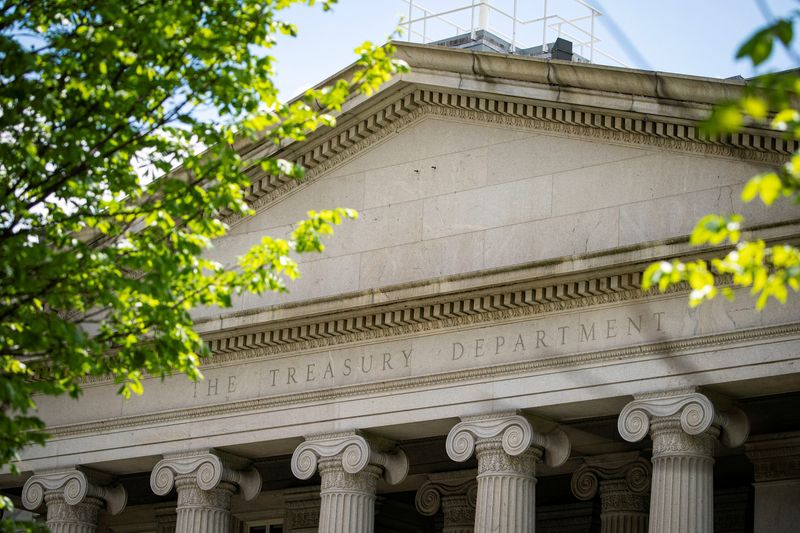Commodities
US, UK take action targeting Russian aluminum, copper and nickel

By Daphne Psaledakis, Polina Devitt and Paul Sandle
WASHINGTON/LONDON (Reuters) -Washington and London on Friday prohibited metal-trading exchanges from accepting new aluminum, and nickel produced by Russia and barred the import of the metals into the U.S. and Britain.
The action is aimed at disrupting Russian export revenue amid Moscow’s ongoing invasion of Ukraine, which has killed or wounded tens of thousands and reduced cities to rubble. Russia is a major producer of aluminum, copper and nickel.
Russian metals producers Rusal and Nornickel did not immediately reply to a Reuters request for comment, nor did the Russian embassy in Washington.
The U.S. Treasury Department said Friday’s action would prohibit the London Metal Exchange and Chicago Mercantile Exchange from accepting new Russian production of aluminum, copper and nickel.
“Our new prohibitions on key metals, in coordination with our partners in the United Kingdom, will continue to target the revenue Russia can earn to continue its brutal war against Ukraine,” U.S. Treasury Secretary Janet Yellen said in a statement.
“By taking this action in a targeted and responsible manner, we will reduce Russia’s earnings while protecting our partners and allies from unwanted spillover effects.”
EXISTING STOCK
A UK official said London expected any market disruption to stabilize quickly, and that the government had consulted with colleagues in the U.S., the LME, the Bank of England and the Financial Conduct Authority to minimize any possible disruption.
“The LME reflects all relevant sanctions and tariffs in its operations, and so will take steps … to implement these sanctions for its own operations, and the operation of its market,” the LME said in a statement, adding that it will release further guidance before the market opens on Monday.
Both the British and U.S. measures will exempt the existing stock of Russian metal on these global exchanges so they can still be traded and withdrawn in an effort to minimize the risk to market stability, the British government said in a statement.
The action does not block bilateral contracts, which will be able to continue, U.S. and British officials said, speaking on condition of anonymity.
The officials said continued trading of Russian metals off of the exchanges is expected to be at a discount, and that while the action does not restrict supply, it is expected that the amount of revenue Russia can get per trade will be reduced.
Washington and London will monitor the discount at which Russian metal is continuing to be exchanged elsewhere, the officials said.
Available aluminum stocks in London Metal Exchange-registered warehouses were 91% of Russian origin in March, unchanged from the previous month, LME data showed on Wednesday.
The high share of Russian-origin metal in LME inventories has been a concern for some producers, which compete with Russia’s Rusal, and some Western consumers who have avoided Russian metal since Moscow’s invasion of Ukraine in 2022.
The share of Russian-origin copper stocks rose to 62% in March from 52% the previous month and the share of Russian nickel rose to 36% from 35% over the same period, the LME said.
Friday’s action is the latest in a series of sanctions imposed on Russia by the U.S., Britain and allies over the February 2022 invasion of Ukraine.

The U.S. last year extended its economic measures against Russia into the metals and mining sector with tariffs on the metals. Officials on Friday said the U.S. imports of the three metals had effectively fallen to zero since.
Britain banned the import of base metals from Russia in December 2023, and said it would extend the prohibition to related ancillary services when it could be done in concert with international partners.
Commodities
Oil prices rise; U.S. crude inventories plunge, Russia-Ukraine truce eyed
Commodities
India’s Reliance to stop buying Venezuelan oil over US tariffs, sources say
Commodities
Oil prices climb on Venezuela supply worries

 Forex3 years ago
Forex3 years agoForex Today: the dollar is gaining strength amid gloomy sentiment at the start of the Fed’s week

 Forex3 years ago
Forex3 years agoUnbiased review of Pocket Option broker

 Forex3 years ago
Forex3 years agoDollar to pound sterling exchange rate today: Pound plummeted to its lowest since 1985

 Forex3 years ago
Forex3 years agoHow is the Australian dollar doing today?

 Cryptocurrency3 years ago
Cryptocurrency3 years agoWhat happened in the crypto market – current events today

 World3 years ago
World3 years agoWhy are modern video games an art form?

 Commodities3 years ago
Commodities3 years agoCopper continues to fall in price on expectations of lower demand in China

 Economy3 years ago
Economy3 years agoCrude oil tankers double in price due to EU anti-Russian sanctions























